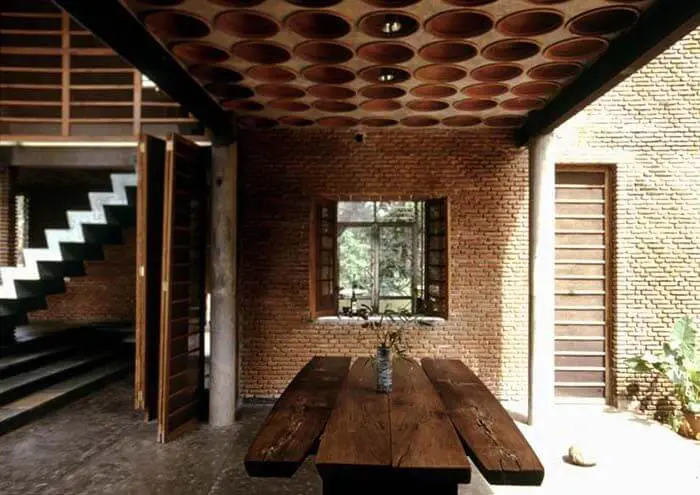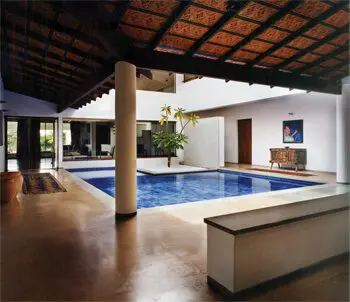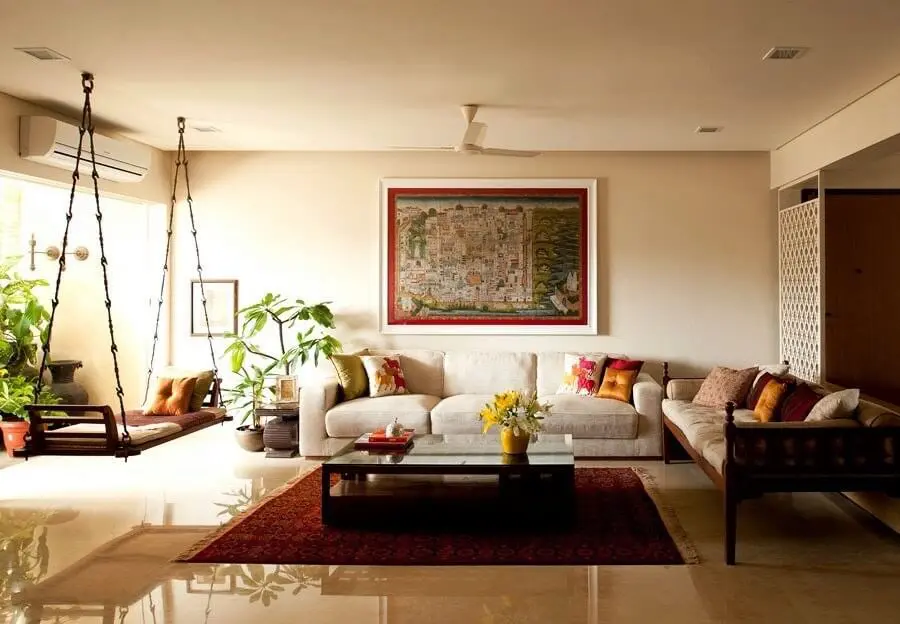With the passage of time and progressive interpretation of architecture, there also comes a need to incorporate the pre-existing traditional designs into the modern and dynamic design of a building. This is often perceived as a need to preserve the ancestry of techniques and designs without compromising the contemporary and minimalistic design of the building.
There are several ways one can incorporate traditional techniques in a modern and conventional design of a residence. All it takes is to think outside the box on ways to successfully blend the already existing techniques that date years back to the modern building techniques of today.
Traditional Design Elements and Its Contemporary Interpretations
1. Filler Slabs
From the early 1980s, the roofs of the majority of the South Indian homes were cast with filler material. They are proven to perform well with load transfer, tension, compression and various other technical aspects.
The clay filler hollow blocks can be filled with anything from stabilized sun-dried mud bricks and glass bottles to even perforated Jali blocks to get a sunlit effect.
The filler roof is a creative and artistic alternative to an otherwise plain RCC roof, hence giving the roof some character.

2. Open Courtyard
Open courtyards were traditionally known as Haveli, Wada, Deori, Nalukettu and so on depending on the region it was found. It is a sustainable solution to the hot weather and cross ventilation that reaches the residence.
The central courtyard often defined itself as the core of a house or a place of relaxation and gathering. It has several rooms planned around it.
Today, we can witness diverse contemporary interpretations to the traditional open courtyards owing to its beneficial features. The sky lit space ultimately interweaves the indoor space to be more in harmony with its landscape.

3. Traditional art
Incorporation of the dynamic and complex patterns of traditional artwork on the walls, tiles or furniture brings liveliness to the space.
This is also an incredible way to involve local artisans into the design process of your residence as each region celebrates its own specific art form.
Traditional art is a priceless expertise of a skilled craftsmen and it will complement the simple modern look of the building, hence making the collaborative effort worth it.

4. Traditional furniture
Houses from the pre-modern era are known to feature stunning pieces of ornately carved wooden furniture. Diwans, wooden chairs, swings, woven cane seats and stools are the most popular. They are often left without being upholstered and instead covered with decorative brass elements.
These statement furniture pieces, when suitably arranged can result in a stunning interior look.

5. Carved Doors
The main entrance of a residence was considered in the earlier ages as an important element as it sets the tone for what’s to come. Not only does a beautifully carved custom double door give your modern house a stunning traditional look, but also helps create an excellent first impression.

6. Stone or wooden Panels
Nothing screams more traditional than a beautifully carved stone or wooden pillar. A simple minimalistic space can be turned charming by planking some beautiful pillars across the house.
They can be an excellent alternative to an otherwise simple and uninteresting brick or cement pillar. They do not only provide a stronger roof support, but also infuse a serene charm to the space.

7. Hand Painted Tiles
In olden traditional homes of south India, painted tiles were extensively used for the purpose of décor and to incorporate colour to the floor and space. They create bold accents help compliment the minimalistic interior.
The hand painted tiles could also be mounted on walls to create a pattern and to add a pop of colour. On the other hand, they could be specifically used for staircases to bring emphasis to them, hence making them look more attractive.

Most of these traditional methods are designed to be sustainable in nature. The reflection of sustainability in the basic framework is a commendable aspect of traditional architecture.
The above mentioned techniques are just a handful of ideas on how to creatively incorporate traditional techniques while building a contemporary home. Based on your preferences, almost any aspect of a traditional home can be tweaked to harmonize with your interpretation of a modern residence in mind.
Not only does the contemporary interpretation of traditional designs pay homage to the traditional architecture of the past, but it also brings uniqueness and character to the building.
– Ambika Kannu





